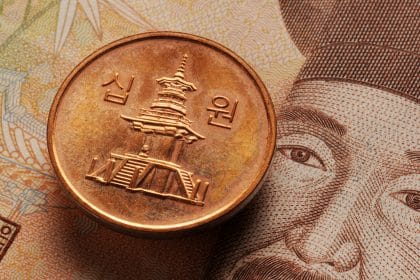As the central bank of South Korea seeks to complete the pilot tests of its national digital currency, it has not announced any information regarding partnerships with major commercial business enterprises yet.
South Korea’s Central Bank intends to begin a pilot test of the distribution and circulation of its forthcoming national digital currency next year. The Bank of Korea (BOK) plans to carry out the pilot testing program until December 2021 with the circulation and distribution test as the final stage of the three-phase Central Bank Digital Currency pilot program.
The second stage involved examining related infrastructural processes and looking to work together with an external partner, which began at the end of August. The first phase involved designing and evaluating the technology, which was successfully completed in July.
Now in the third phase, the BOK will work on the distribution of the CBDC and overseeing its circulation process.
However, the central bank has repeatedly said that carrying out the pilot program does not imply that they will unveil a CBDC as it is simply doing experimental tests.
In April, South Korea revealed that it had formed a 22-month pilot program working on a possible launch of a central bank-issued digital currency, a program that would run through December 2021.
In June, the BOK created a legal committee to be in charge of advising on the possibility of launching a national digital currency.
In July, the central bank completed the initial-phase assessment of the project and has been developing a national digital currency system architecture through a partnership with an external consulting firm.
South Korea Getting Real about National Digital Currency
At first, South Korea said that it had no immediate intentions to launch a state-run digital currency project. However, with major economies like nations, including EU member countries, China, and the U.S. making rapid progress in developing their national digital currencies. The BOK also jumped on the global bandwagon and is now committed to making the project become a reality.
The Covid-19 outbreak particularly triggered the interest on the national digital currencies across the world, as the spread of the coronavirus led to the increase of the contactless transactions.
China has already made much progress towards the launch of its digital yuan and is already conducting multiple tests across major cities in the country through the assistance of local commercial businesses and banks. China’s government has remained proactive in building infrastructures that allow users to make digital currency payments through major local online and mobile payment platforms like WeChat Pay and Alipay.
China’s central bank announced its intention to put the CBDC for official use as early 2022 during the forthcoming Beijing Winter Olympics.
Although the feasibility of unveiling South Korea’s CBDC is seen, China proves to be ahead in terms of embracing the national digital currency.
South Korea’s central bank has not engaged in advance conservations with fintech firms or major commercial payment platform operators over its CBDC. As the central bank seeks to complete the pilot tests of its national digital currency, it has not announced any information regarding partnerships with major commercial business enterprises.




